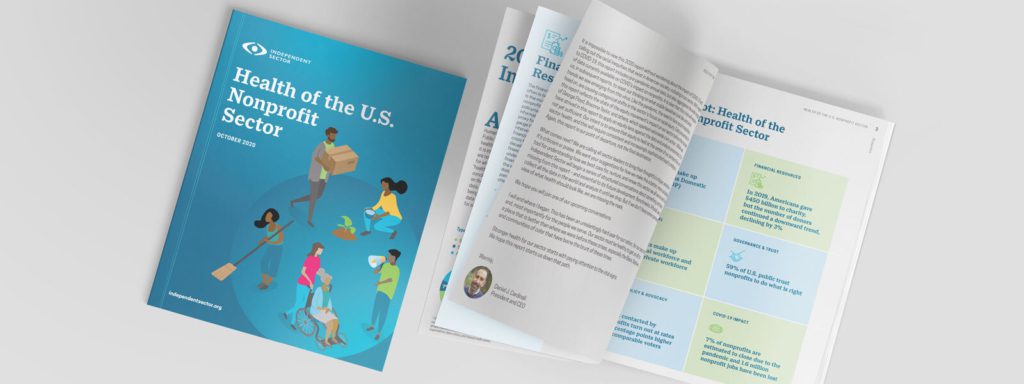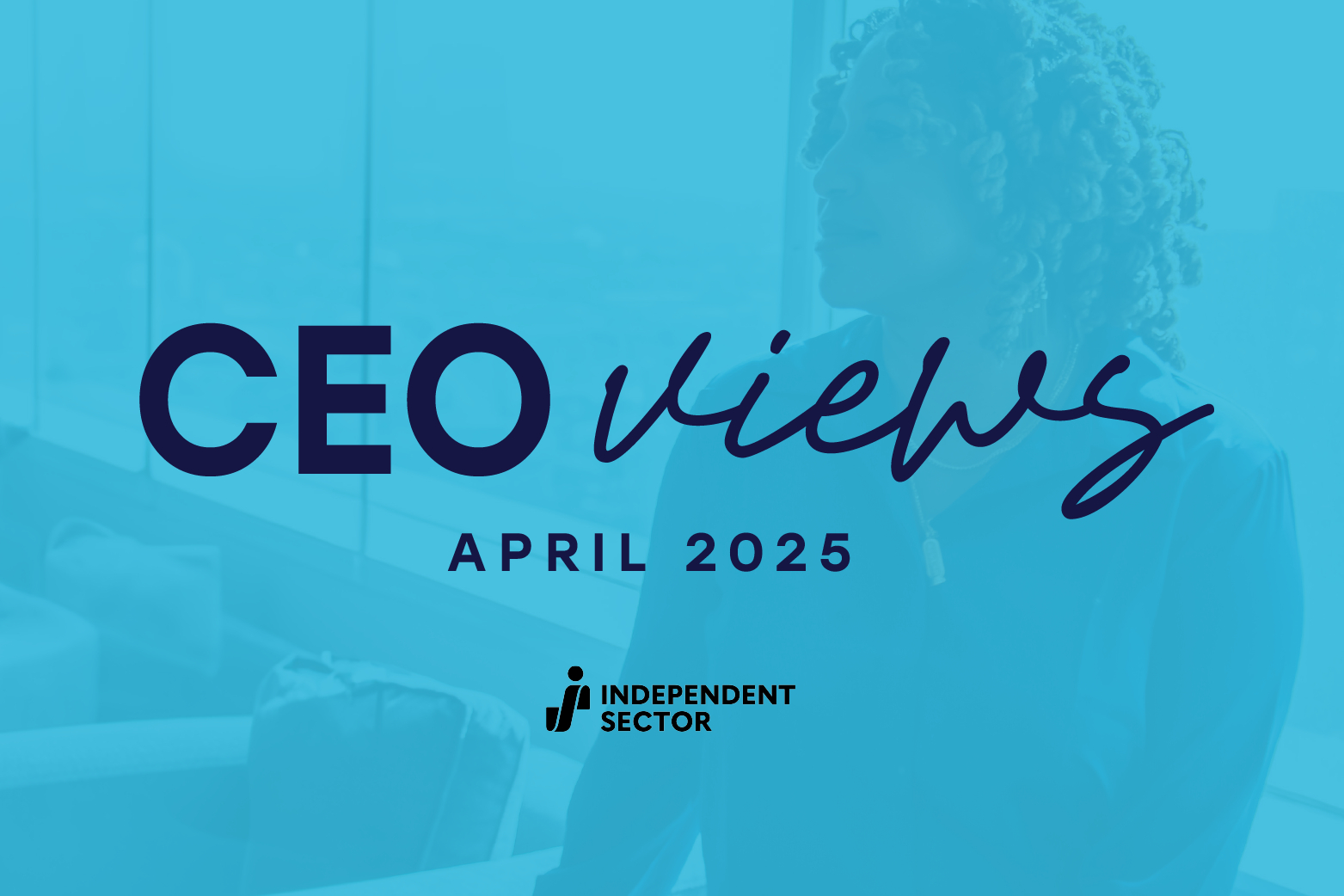What seems like the longest year of a lifetime is growing to a close. To say that 2020 has been challenging is nowhere close enough to the truth. It has been a cruel and brutal year that has touched our sector, the organizations we help lead, and our communities in unforgiving ways.
What has been clear throughout this year is that civil society and the nonprofit sector are at the core of both the nation’s response to, and recovery from, this time of COVID-19 pandemic, economic crisis, and racial reckoning. Without a strong sector and resilient civil society, democracies like ours can atrophy and people will suffer. Without a healthy nonprofit sector, the climb out of 2020 will be nearly impossible.
For several years, and increasingly in this moment, we have been asking ourselves, “How healthy are we as a sector?” The reality is that there is no easy way to tell. To be sure, there is much good data living in academic centers and on multiple websites. However, the data is often fragmented. It is sometimes out of date. Much of it also lacks interpretation from which a story of health, or lack thereof, can emerge.
Working with sector scholar Alan Abramson, it was Independent Sector’s initial aim to develop a report where leaders could find many of those important and current data in one place. After extensive interviews and testing in 2019, we discovered that leaders wanted more than data. They wanted an informed point of view on what the data might be telling us and recommendations on actions that might help us move toward a healthier civil society.
With these stakeholder inputs in mind, we have developed the inaugural – Health of the U.S. Nonprofit Sector Report – a data, analysis, and action framework to build our collective understanding of the strengths and weaknesses of the sector. We intend this to be an annual publication, with quarterly supplements coming late next year or early in 2022. To be clear, this is our frame. It is not the only such frame. Nor is it the perfect or final frame. As you will see in the pages that follow, the data we have collected in this first attempt often fly at very different levels of rigor. The health assessments based on these data are incomplete. And, in full transparency, we have intentionally chosen not to include sector impact measures, which remain notoriously challenging to aggregate at a national level. Our focus is, for now, on the inputs that make for healthy organizations.
Our aim is that this report becomes a platform for a sustained and data-informed conversation on what we know about our health, what we don’t know (and should), and what we should be doing in response to both sets of understandings. This report strives to be both a vehicle for delivering data and analysis and a vehicle for engaging the sector in order to learn, improve, grow stronger, and act.
It is impossible to view this 2020 report without wondering about the impact of COVID-19 and calling out the racial inequities that exist in American society, including in our sector. With regard to COVID-19, this report includes pre-pandemic annual data, but also aggregates the wide range of data currently available on COVID’s impact on nonprofits. It is clear that this crisis will require us, in subsequent reports, to reset our thinking on what stable baselines look like and what trends we see emerging from this virus. Like the pandemic, the need to face racial inequities, head on, are causing categorical shifts in the sector’s focus on racial equity. Data presented in this report reflects the state of the equity movement’s impact on our sector before the murder of George Floyd, Breonna Taylor, and others, which sparked nationwide civic action. While we have strived in this report to apply an equity lens against the data and analysis presented, it is not yet sufficient. Our intent is to ensure that equity is held at the center of our perspective on sector health, and this will require consistent and increasingly sophisticated equity analysis. Again, this report is our point of departure, not the final destination.
What comes next? We are calling all sector leaders to bring their thoughtful critique, whether it’s criticism or praise. We want your suggestions for how we make this a better, more valuable tool for understanding how we best care for, nurture, and renew this sector we all serve and love. Independent Sector will begin a series of structured conversations about something entirely missing from this report – and essential to its future development: Benchmarks. Afterall, we can collect all the data in the world and analyze it until we drop. But if we don’t have some common view of what health should look like, we are missing the mark.
We hope you will join one of our upcoming conversations.
I will end where I began. This has been an unrelentingly hard year for our nation, for our sector, and, most importantly for the people we serve. Our sector must be healthy to get us all to a place that is better than where we were before these crises, especially the Black, Native, and communities of color that have borne the brunt of these times.
Stronger health for our sector starts with paying attention to the vital signs. We hope this report starts us down that path.
Want to learn more? Register for Upswell to attend a workshop on this report, “How Do We Know the Nonprofit Sector Is Healthy?” on Wednesday, October 14, 2020 at 3:15-4:15 PM ET.



